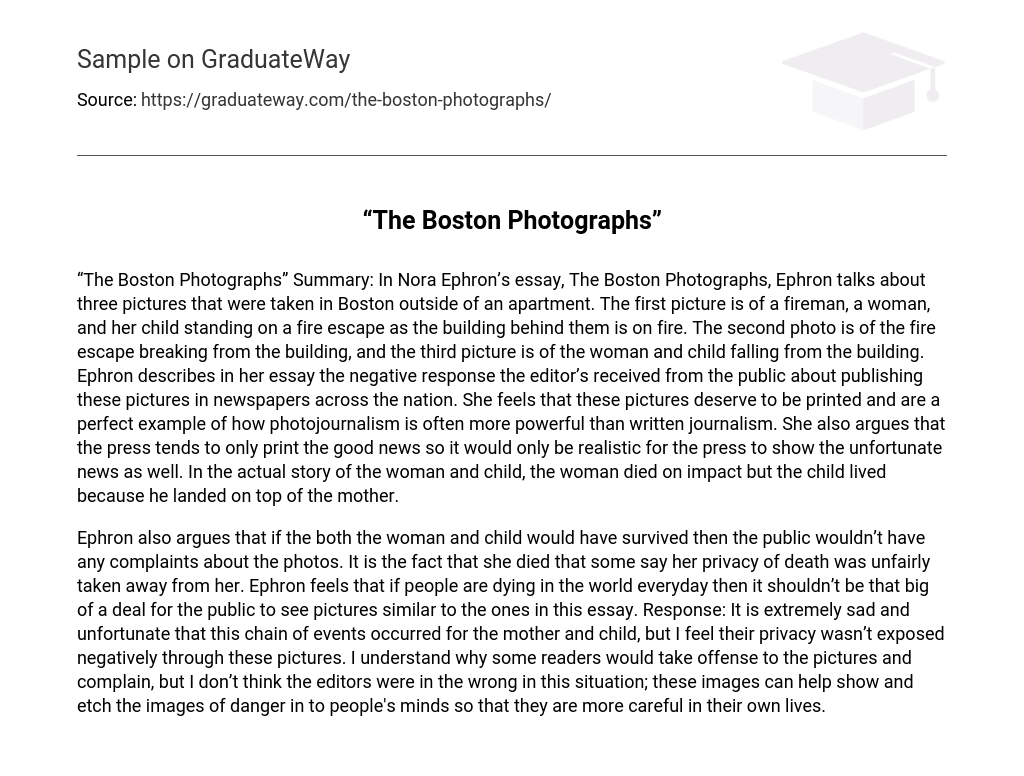Nora Ephron discusses three photographs taken in Boston in her essay “The Boston Photographs”. These pictures capture a fireman, a woman, and her child on a fire escape while the building behind them is ablaze. The first photo shows this scene, the second showcases the fire escape detaching from the building, and in the third, the woman and child plummet from the structure. Ephron recounts how the publication of these images in newspapers nationwide drew significant public backlash. Nevertheless, she asserts that these photographs merit printing, as they exemplify the potent impact of photojournalism compared to written journalism. Ephron also suggests that the media predominantly showcases positive news, implying it is only fair to present tragic news as well. In regard to the actual incident depicted, the woman died instantly upon impact, while miraculously, the child survived by landing on top of his mother.
Ephron argues that if both the woman and child had survived, people would not have objected to the photos. It is only because she died that some claim her privacy in death was violated. Ephron contends that since people die every day, it should not be a big deal for the public to view similar pictures. In response, I feel deeply saddened and unfortunate about the sequence of events experienced by the mother and child. Nevertheless, I do not believe their privacy was compromised through these images. I understand why certain readers may take offense and voice complaints, but I believe the editors were justified in this particular situation. These visuals can effectively illustrate and emphasize to individuals the dangers they need to be cautious of in their own lives.





